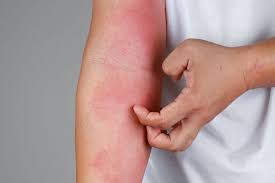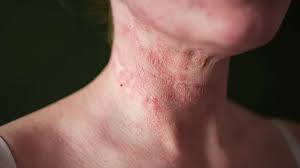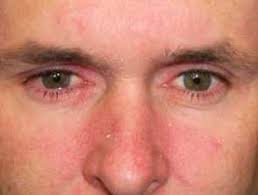Stasis Dermatitis, Congestion eczema, Gravitational dermatitis, Gravitational eczema, Stasis eczema, Varicose eczema.
Root cause of disease
Stasis dermatitis is caused by venous hypertension resulting from retrograde flow related to incompetent venous valves, valve destruction, or obstruction of the venous system. The ensuing inflammatory process is mediated by metalloproteinases, which are up-regulated by ferric ion from extravasated red blood.
Symptoms
- The lower part of your legs may swell, especially during the day when you’ve been walking
- Your legs may ache or feel heavy
- You’ll likely also have varicose veins, which are thick, ropey damaged veins in your legs
- The skin over those varicose veins will be dry and itchy
- You may develop open sores on your lower legs and on the tops of your feet
Causes
- Stasis dermatitis happens in people who have blood flow problems in their lower legs. If the valves that normally push blood up through your legs toward your heart malfunction, blood can pool in your legs
- Your legs can swell up and varicose veins can form
Home Remedies to treat Stasis Dermatitis
Remedy– 1: Aloe Vera Gel
Materials Used: Aloe vera gel

Aloe vera gel comes from the leaves of the aloe plant. People have used aloe vera gel for centuries to treat a wide range of ailments, including to soothe eczema.
The antibacterial and antimicrobial effects can prevent skin infections, which are more likely to occur when a person has dry, cracked skin. Aloe’s wound-healing properties may soothe broken skin and promote healing.
Procedure:
People can buy aloe vera gel in health stores or online, or they can purchase an aloe vera plant and use the gel directly from its leaves.
Individuals should aim to use aloe gel products with few ingredients — some products may contain preservatives, alcohol, fragrances, and colors, which can irritate sensitive skin. Additionally, alcohol and other drying ingredients could make eczema worse.
Start with a small amount of gel to check for skin sensitivity, as aloe vera can sometimes cause burning or stinging. However, it is generally safe and effective for adults and children.
Product Link: Aloe Vera Gel
Remedy– 2: Apple Cider Vinegar
Materials Used: Apple cider vinegar

Procedure:
Always dilute apple cider vinegar before applying it to the skin — undiluted vinegar can cause chemical burns or other injuries.
People can use the vinegar in wet wraps or baths, and it is available in most supermarkets and health stores.
To use apple cider vinegar in a wet wrap:
- Mix 1 cup of warm water and 1 tablespoon of apple cider vinegar
- Apply the solution to cotton or gauze
- Cover the dressing in clean cotton fabric
- Leave it on the area for 3 hours
To try an apple cider vinegar bath soak:
- Add 2 cups of apple cider vinegar to a warm bath
- Soak for 15–20 minutes
- Rinse the body thoroughly
- Moisturize within several minutes of leaving the bath
Product Link: Apple Cider Vinegar
Remedy- 3: Coconut Oil
Materials Used: Coconut oil

Procedure:
A person can apply virgin or cold-pressed coconut oil directly to eczema to help moisturize the area and reduce bacteria. A person should use it once or twice per day on damp skin.
Product Link: Coconut Oil
Other Remedies
Tea Tree Oil
Tea tree oil has anti-inflammatory properties that could soothe irritation and is great for treating eczema. To use tea tree oil, you must first mix it with a carrier oil such as jojoba oil. This is because using tea tree oil in its undiluted state could cause certain side effects such as minor irritation.
Turmeric
Turmeric is one of the eczema home remedies in India. It is anti-inflammatory and has wound healing properties which makes it a great option when treating eczema. To use this herb, you can mix a spoonful of turmeric powder with some honey and apply it to the affected area. Let it sit for a few minutes before washing it off with water.
Apple Cider Vinegar
Eczema can also be treated using apple cider vinegar. To do this, add about two portions of apple cider vinegar to a warm bath. This will help in reducing inflammation on the skin and also reduce dryness.
Preventions
A few changes to your daily habits can help you get your venous stasis dermatitis under control and keep it from getting worse.
Take breaks: If your job keeps you sitting or standing for long periods, take time to move. Take a brisk walk for about 10 minutes each hour.
Exercise: Moving makes blood flow better. Ask your doctor how often you should work out and what activities are safe for you.
Wear comfortable clothes: Compression stockings are a good choice for your legs, but choose loose-fitting cotton clothes for the rest of your body. Tight or rough fabrics can irritate your skin and affect circulation.
Take care of your skin: Your skin could get easily irritated. It’s a good idea to use only gentle cleansers and soft towels when you bathe, followed quickly by a fragrance-free moisturizer. Avoid cleaning products, perfumes, grass, plants, pet hair, or anything else that bothers your skin.




